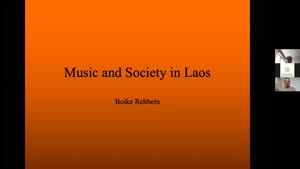Population as Cause and Casualty of War - Prof. Dr. Gunnar Heinsohn - University of Hamburg
- Lecture2Go
- Catalog
- F.5 - Geisteswissenschaften
- Asien-Afrika-Institut
- Youth and Ageing in Southeast Asia
Catalog
Population as Cause and Casualty of War
To predict fifty years of war and cruelty or wealth and poverty, one should
reckon with a factor that is already here today and will continue until 2070.
It is the two billion children under the age of fifteen. If we break them down to 10,000, 1,300 of them live in East Asia, where there are at least 100 high achievers among 1,000 children, and 700 in the Europeanized world (60 in Germany), where there are 25 aces among 1,000. Only these blocks with altogether 35 nations compete globally. Yet, they are short of offspring and, therefore, have a war index below 1. The remaining 8,000 children live in 160 nations that have never been industrialized or are in premature deindustrialization because their 0 to 3 high achievers among 1,000 children do not suffice to master high tech branches. Their scarce best are poached by the top nations that, at the same time, must turn themselves into fortresses of competence that only accept high-skilled immigrants. All nations with a war index above 2 are among the hopeless 80 percent. Since they lack weapon systems for attacks on the First World, they will experience, especially in the sub-Saharan region, extreme crises and large-scale killings in their vicinity.
---
The population of Southeast Asia has experienced a sevenfold increase in less than 120 years to a total of more than 650 million people, which compares to Europe with around 740 million. Southeast Asia’s population is developing at a high speed, and although the growth of the elder is rapidly increasing, Southeast Asian nations have relatively young populations, which make them highly attractive for companies because the region’s GDP is growing expansively.
Using the young population structures and aging of Southeast Asian populations as a lens, international scholars will discuss important current issues, such as connections between youth and violent conflicts, the categorisation of age groups in Southeast Asia and how youths express themselves in cultural productions.





